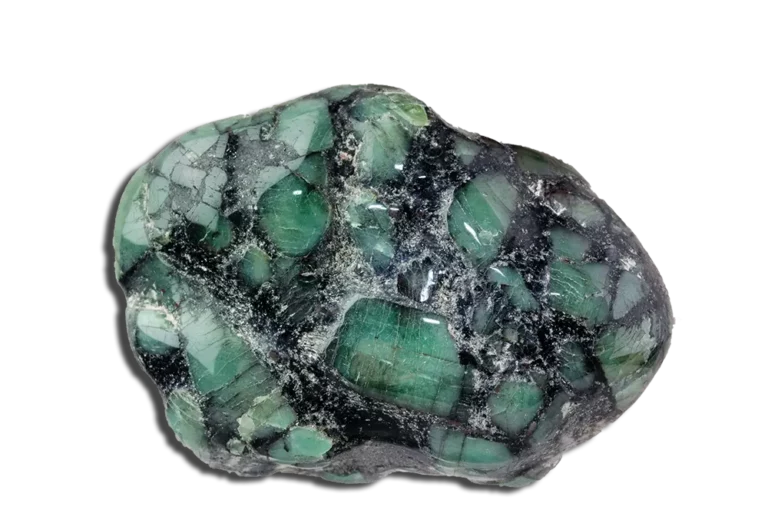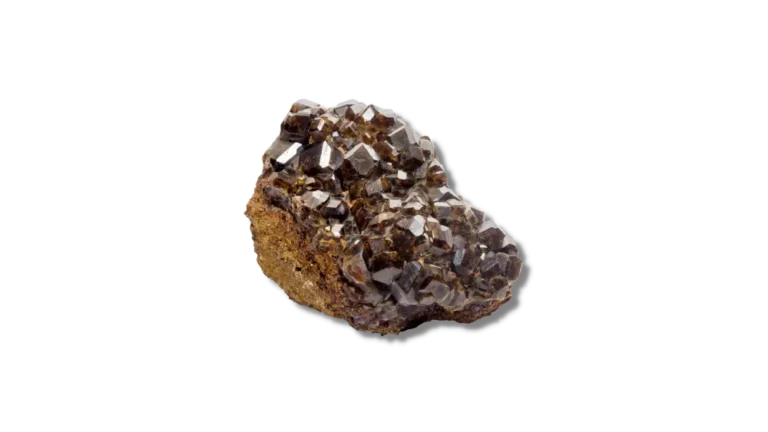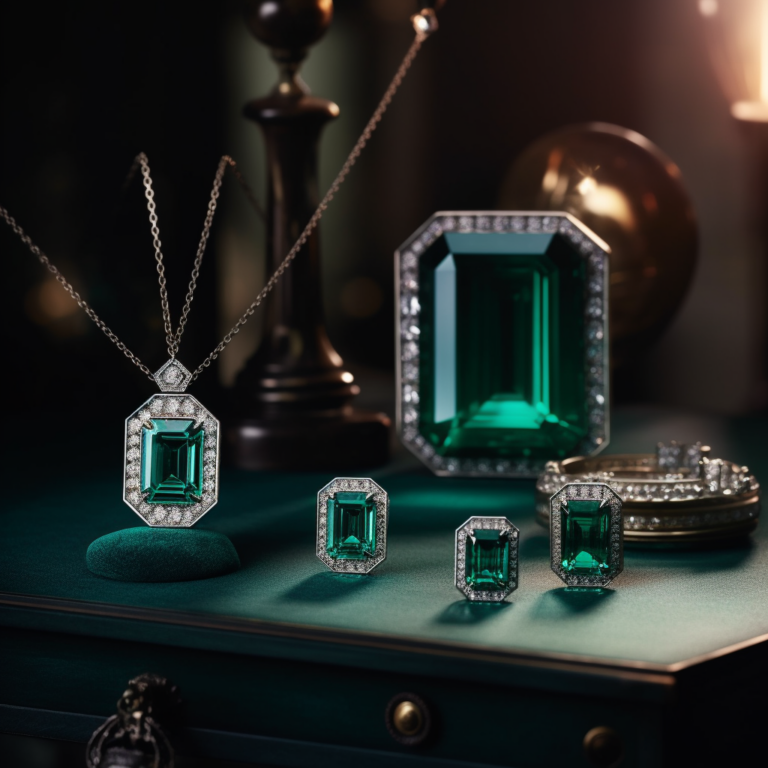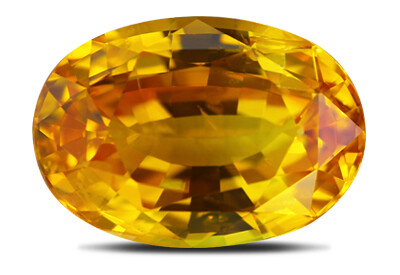Amethyst Stone: Properties, Benefits & Meanings
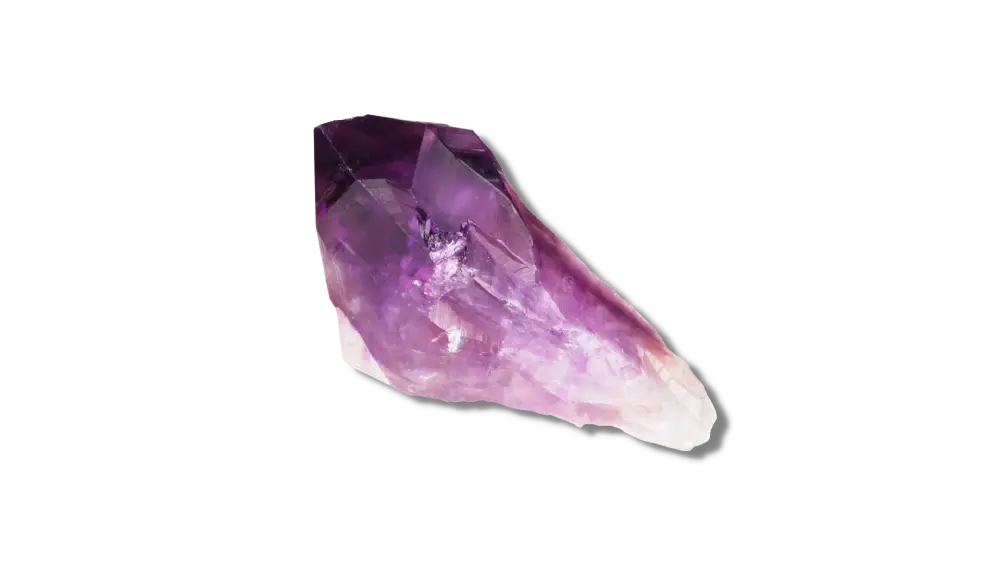
Amethyst Stone Overview
Amethyst is a beautiful, precious stone that has been used for centuries as jewelry. Amethyst stone is a purple variety of quartz. It’s the birthstone for February and can range in color from a light, slightly pinkish violet to a deep grape purple.
The deeper shades of Amethyst can be some of the most valuable gemstones, but good quality amethysts are abundant and, therefore, affordable.
This article will take a look at the properties, uses, and meanings behind the Amethyst Stone.
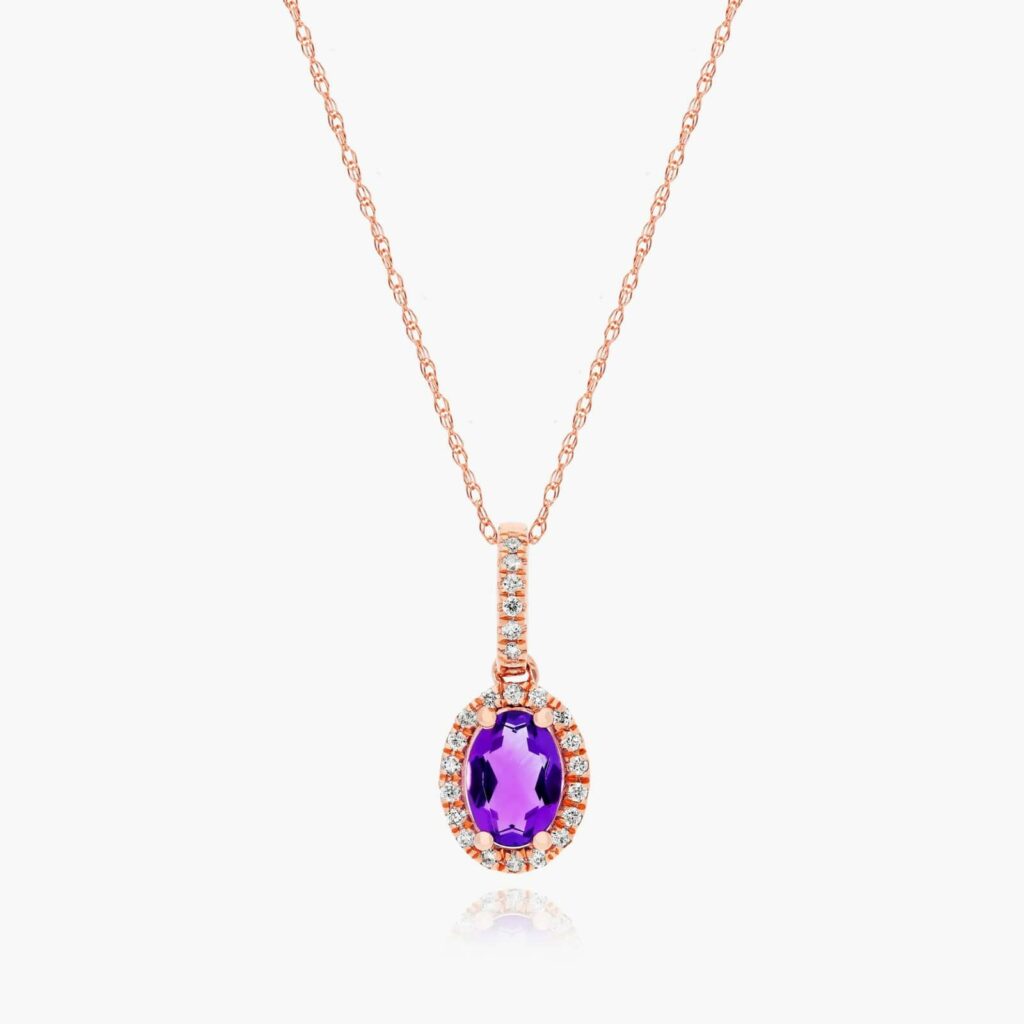
Whimsical Romance: James Allen’s 14K Rose Gold Oval Halo Amethyst and Diamond Necklace. A captivating dance of amethyst and diamonds, set in rose gold for a touch of enchanting elegance.
What Is Amethyst Stone?
Amethyst stone is a purple variety of quartz. It’s the birthstone for February and can range in color from a light, slightly pinkish violet to a deep grape purple. Amethyst is a beautiful, precious stone that has been used for centuries as jewelry. It is a simple hexagonal crystal that makes up most violet quartz. Amethyst can have a range of colors, including light pink to deep grape purple.
The purple amethyst is the perfect stone for those who are romantics at heart. The color closely resembles royalty and beauty, making it an ideal choice as a birthstone or to wear everyday!
Amethyst was named after the Greek word amethystos, which means “not drunken” or “sober-minded.” Ancient Greeks believed this stone would prevent them from getting drunk when they drank wine (which makes sense because it looks like wine).
Amethyst stone is sometimes confused with other gems like citrine or turquoise because they’re all pale-colored minerals that can be found in nature.
Still, Amethyst stone differs from these by having an opaque crystal structure rather than transparency like the others do—it also has a distinct violet color that’s not found elsewhere among colored stones (except for blue topaz).
There are many varieties of Amethyst colors; some are even considered “rare” varieties!
Amethyst Appearance
- Amethyst stone is a purple-colored variety of quartz.
- The unique color of Amethyst is caused by iron and titanium impurities, which are present in the crystal structure of quartz.
- The amount of iron present in its chemical makeup affects its appearance.
- Consequently, Amethyst stones with more iron will appear darker than others, while specimens with less iron will be lighter and often display a purplish tint when exposed to heat (thermoluminescence).
- The main distinguishing feature of Amethyst is its color, which ranges from pale lilac to deep purple.
- Amethyst comes in various colors, including pink, yellow, lavender, and green. However, the most prized color is purple.
- Amethyst is generally free from inclusions.
birthstone
Amethyst stone is February‘s birthstone and the traditional gift for the 21st wedding anniversary. It’s a purple variety of quartz and one of the most precious among all other stones. Amethysts are typically cut as cabochons or faceted stones.
Physical Properties Of Amethyst
| Mineral Group | Quartz |
| Formula | SiO2 |
| Chemical name | Silicon dioxide |
| Color | Voilet, Purple |
| Hardness (Mohs scale) | 7 |
| Refractive Index | 1.54-1.55 |
| Fracture | Conchoidal |
| Luster | Vitreous |
| Specific Gravity | 2.63 – 2.65 |
| Transparency | Translucent, Transparent |
Where Can You Find Amethyst?
Amethyst is found all over the world, though most of it comes from South America. It can also be found in:

How is Amethyst Formed?
Natural Amethyst is a gemstone that comes in many forms, but geodes are the most common. Geodes are rocks hollowed out by water or wind, and they often contain crystals of Amethyst.
The quartz that eventually becomes Amethyst is produced by heat and pressure deep within Earth’s crust. The material then rises to the surface through cracks or fissures, where it cools off slowly over millions of years.
This can happen on land or underwater (as with ametrine), but it usually occurs below ground because that’s where most of our planet’s open space lies!
How To Tell If An Amethyst Is Real?
Color Zoning
When you look at a natural Amethyst stone, you can see zone lines in the crystal. These lines form when the heat of the Earth causes differences in color as it rises to the surface.
If you have a fake Amethyst stone, these lines will not be as distinct and clear as they would be on a real one. You can also test for clarity by shining light through your sample to see if there are any imperfections (i.e., bubbles or fractures) that interrupt this passage of light through your stone.
Scratch Test
You can perform a scratch test to test if your Amethyst is genuine. It’s reasonably straightforward. Just rub the surface of your stone with a piece of sandpaper or steel wool. If it’s real, it won’t scratch at all; if it is fake, it will scratch easily.
Specific Gravity Test
To determine if your Amethyst is genuine, use a specific gravity test:
Place your sample on top of some water inside a pan and weigh it down with something heavy until it sinks into the water. Then remove it from the pan and dry off any moisture before weighing again.
This difference between wet weight and dry weight should give you an idea of how dense/heavy/lightweight your item actually is compared to other gemstones such as beryl or quartzite (which are much lighter).
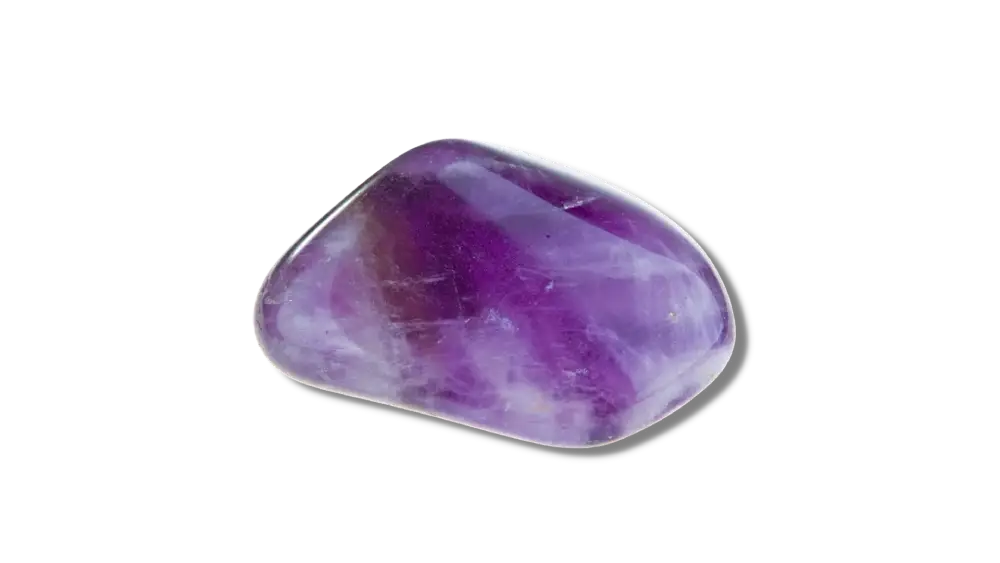
Amethyst Stone Value
Depending on its color and clarity, an Amethyst could either be cheap or very expensive. The more intense the coloring, the more valuable it is. Amethysts with good color and clarity are considered to be good quality.
Size: The smaller the stone, the more valuable it becomes. This is because small stones are rarer and more difficult to find than larger ones. So if you wish to get your hands on a stunning amethyst, you might consider looking for one that’s about an inch long or less—although this doesn’t mean you have to avoid larger stones altogether; they’re just not as valuable as smaller ones tend to be!
Quality: Quality is more important than size when it comes to determining the value of an amethyst. For example, if you’re buying a small Amethyst stone with excellent clarity, it will be worth more than a large one with several flaws. So maybe you should try shopping around so that you can get something at a reasonable price!
Cut: Amethysts are typically cut as cabochons or faceted stones.
- A cabochon is a gemstone that has been polished smooth and has no facets (flat surfaces). Cabochons may be set in jewelry, but they are not used for any jewelry that will be worn regularly. They’re often used to make pendants, medals, and other decorative items because they do not need to be handled as often as most other gemstones.
- Faceting is the process of cutting a gemstone into many small flat surfaces called facets. The light reflects off each of these facets to create more brilliance. Faceting also makes it easier to see all sides of your Amethyst without rotating it too much.

Graceful Allure: Adorn yourself with James Allen’s 14K Rose Gold Halo Amethyst and Diamond Petite Drop Earrings. The elegance of amethyst embraced by a diamond halo, suspended in delicate rose gold.
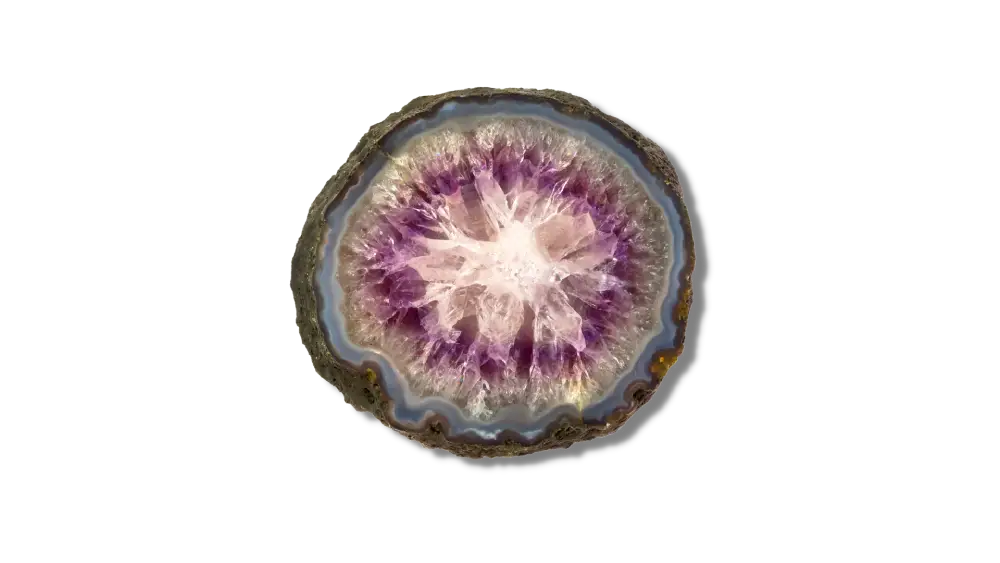
Amethyst History
People have worn Amethyst stone since ancient times because of its soothing qualities. It was believed to possess healing properties in Egypt, Greece, Persia, Rome, etc. It was used in many ways, including being prescribed as a medicine to treat ailments like insomnia or mental disorders such as anxiety or depression.
In ancient times Amethyst was said to ward off evil spirits while simultaneously bringing peace and tranquility into your life. In addition, it’s been said that wearing Amethyst will help you maintain your individuality while still allowing you to fit into society at large – whatever your goal might be!
Furthermore, Amethyst was thought to protect its wearer from drunkenness and was also used for meditation by Native Americans, monks, and priests in medieval Europe.
The ancient Greeks believed that Amethyst prevented them from having nightmares and protected them from evil spells; they wore it on their bodies or made it into rings with holes so that they could be worn around the neck or wrist or even hung over doorways!
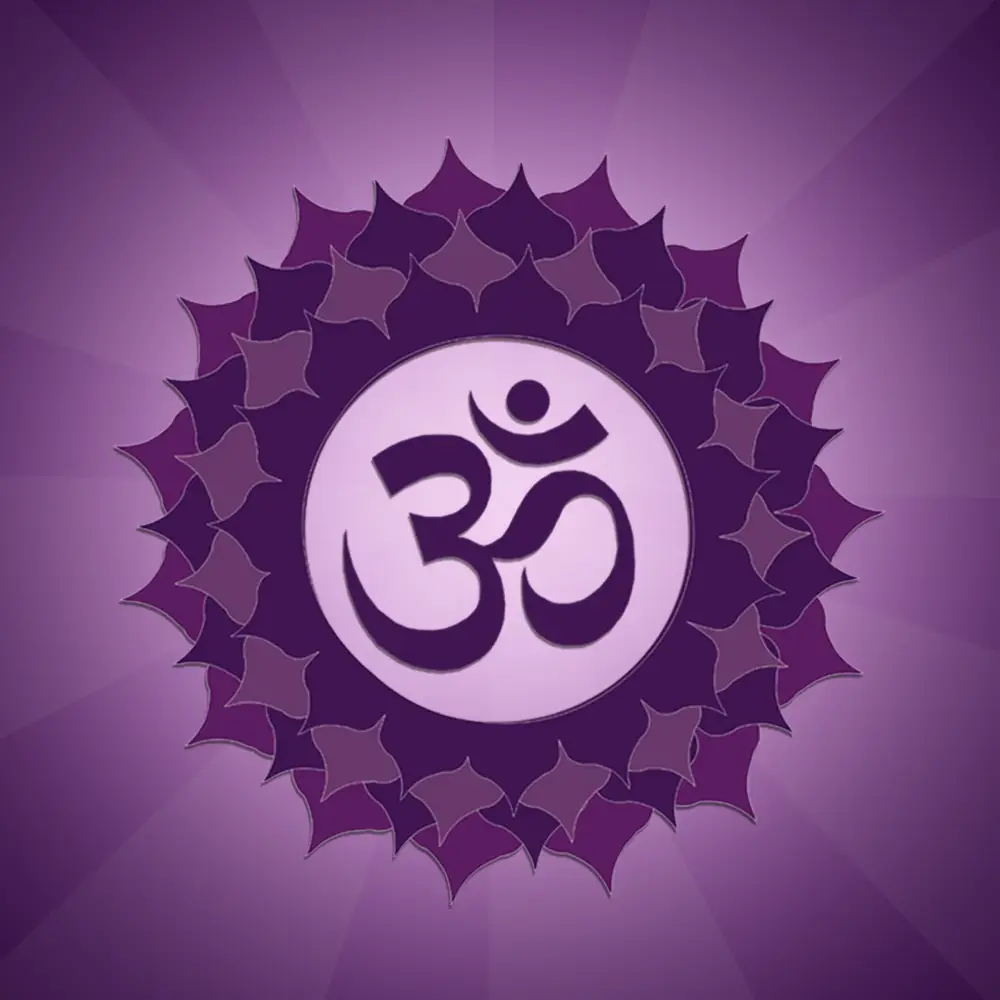
Amethyst Chakra Connection
Amethyst is a calming stone that helps to raise the spiritual vibrations of all chakras. The crown, third eye, and heart chakras are the most sensitive to Amethyst energy, but it can also help you connect with your lower chakras as well.
Amethyst is a great stone to use as a tool for chakra alignment. It helps with the crown chakra, which is responsible for your sense of self, your well-being, and how you perceive your place in the world.
The heart chakra is located right in the middle of your chest at approximately 4 inches below your collarbone on either side. When this chakra is balanced, you should feel grounded but still open to life’s experiences—and when it’s out of balance, you might feel insecure or emotionally distant from others.
Amethyst Meaning And Uses
- Amethyst is the February birthstone and is one of the most important stones in the crystal healing community.
- It is a powerful and protective stone used for healing and enhancing spiritual growth.
- It can also be used to increase intelligence and combat laziness.
- Amethyst stone has long been associated with royalty. The ancient Egyptians believed Amethyst warded off drunkenness and evil spirits, while the ancient Greeks thought it was a powerful antidote to poison.
- In addition to these more practical uses, Amethyst is also known for its healing properties: Amethyst stone is believed to serve as a calming agent for those suffering from anxiety or insomnia.
- Many believe that wearing Amethyst can help prevent aging by helping your body stay healthy and vibrant.
- This gorgeous stone makes an excellent choice for jewelry because of its lovely color and affordable price point.
- Wearing Amethyst jewelry can put you in an energizing and uplifting state of mind. The beautiful purple color can help you feel calm when you’re feeling stressed out by life’s daily demands; it provides clarity and helps with decision-making skills.
- Amethyst is even said to improve your memory!

How To Take Care Of Amethyst Jewelry?
- If you have Amethyst jewelry such as earrings and bracelets, it’s a good idea to clean it regularly. To clean your amethyst jewelry, simply wash it with soapy water.
- Another option is to wipe your Amethyst piece with a microfiber cloth for a quick polish.
- It is best not to steam clean any of your jewelry that contains this gemstone because it could damage the integrity of its structure and cause cracks in the stone itself (and we don’t want any broken pieces!).
- If you’d like to cleanse your Amethyst jewelry of negative energy, burn white sage or another cleansing material nearby. This will help draw out any negative energy that may be clinging to your piece of jewelry.
- You can also recharge an amethyst by burying it in the ground overnight during a full moon or by pouring salty water over it for a few minutes.
FAQ
Is Amethyst heat treated?
Amethyst stone is not normally heat-treated, but it can be. Some think heating amethyst makes it more durable and increases its color saturation. However, this is not true! Heating amethyst will actually make it more susceptible to scratches and cracks. If you want to increase the color saturation of an amethyst gemstone, contact your local jeweler about using a special laser treatment that can boost the color without changing the gem’s structure.
What are the spiritual benefits of Amethyst?
Amethyst is associated with spirituality because it has been used for thousands of years in meditation, divination, and healing rituals throughout history. It’s considered to be an aid to psychic development because it helps you connect with your higher self and access information from your subconscious mind.
It’s also known as a “stone of sobriety” because it helps you stay calm under pressure and focus on one thing at a time—which can be helpful when trying to get work done or manage anxiety! Amethyst was also said to protect against nightmares (though we don’t recommend wearing an amethyst necklace while sleeping).
What gemstones go best with Amethyst?
Amethyst is one of the most popular gemstones in the world and looks great with several stones. Its purple hue is rich and eye-catching, making it an excellent choice for a wide range of jewelry styles. But what other gems go well with Amethyst?
The best way to learn about gemstone compatibility is to check its chemical composition. Amethyst has a chemical formula of SiO2—silicon dioxide—which gives it its color and hardness. However, not all gems have the same chemical makeup, so you’ll want to look for gems with similar compositions. For example:
• Garnet: Garnet is another member of the quartz family, and it has similar chemical properties as Amethyst (SiO2), so they should look great together! Garnets come in many colors, including reds and pinks. Amethyst pairs exceptionally well with the Almandine Garnet.
• Tanzanite: Tanzanite has a similar chemical formula (Ca2Al2F8O15) as Amethyst and garnet; however, its blue color makes it an excellent complement to Amethyst! You can also opt for green tourmalines or blue sapphires if you’re looking for something more colorful than plain old blue or green tourmalines.
It also makes good connections with stones like the Tiger’s eye, Ametrine, and Aqua Aura.
Can Amethyst be produced artificially?
Amethyst can also be produced artificially in laboratories. Synthetic (laboratory-grown) Amethyst is produced by a synthesis method called hydrothermal growth, which grows the crystals inside a high-pressure autoclave. The crystals are grown from an aqueous solution containing aluminum silicate, sodium silicate, iron oxide, magnesium oxide and quartz sand.


